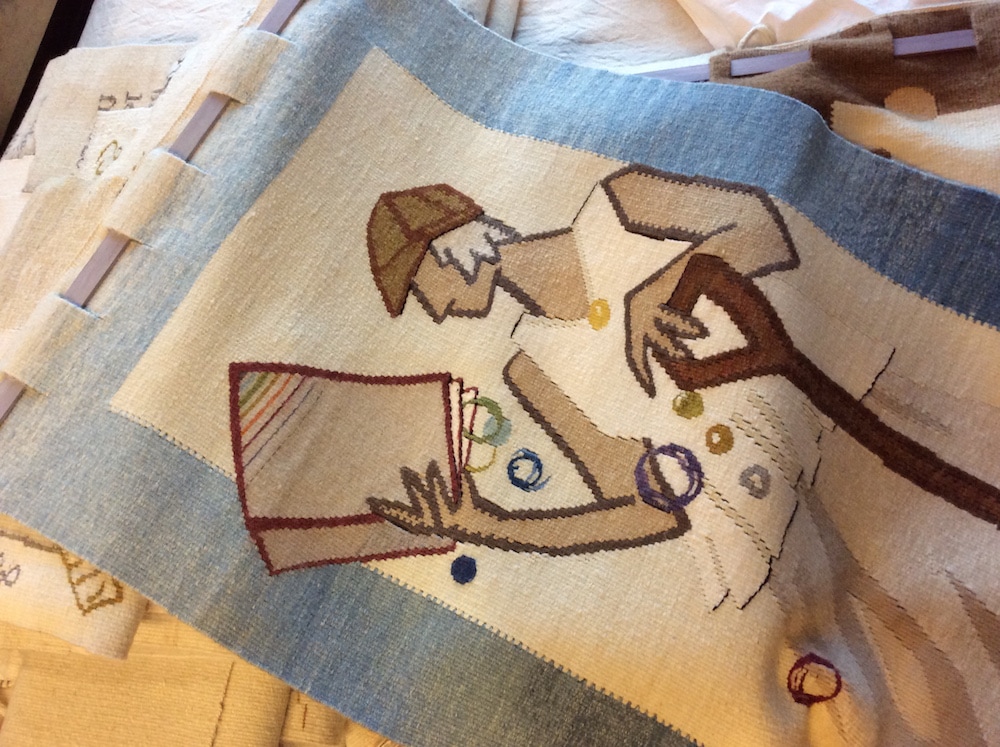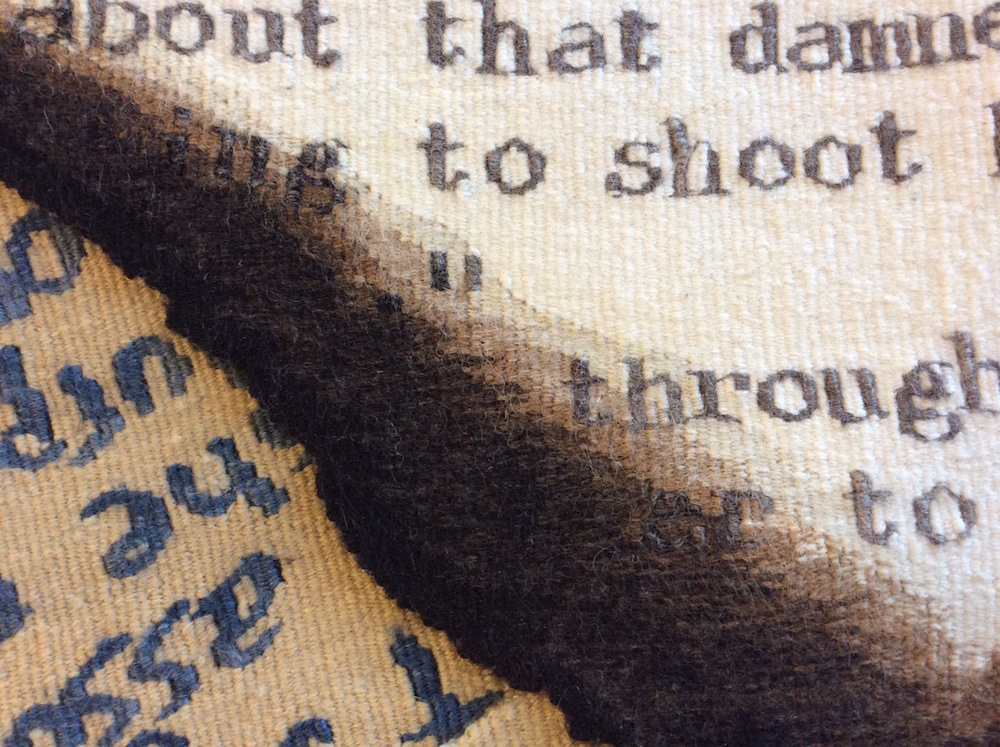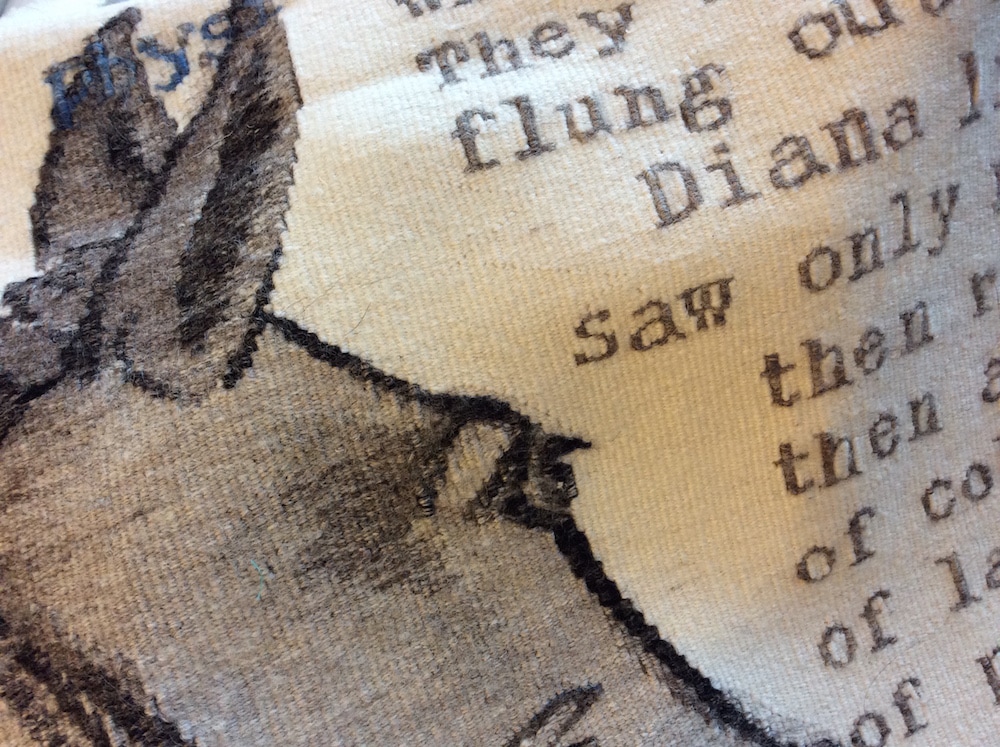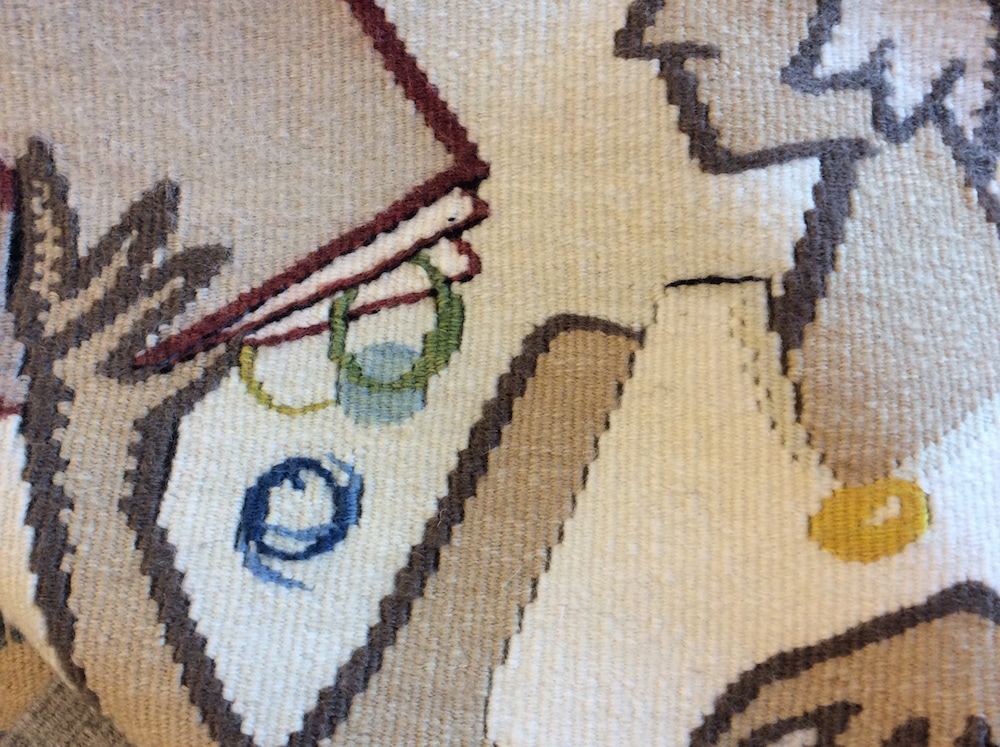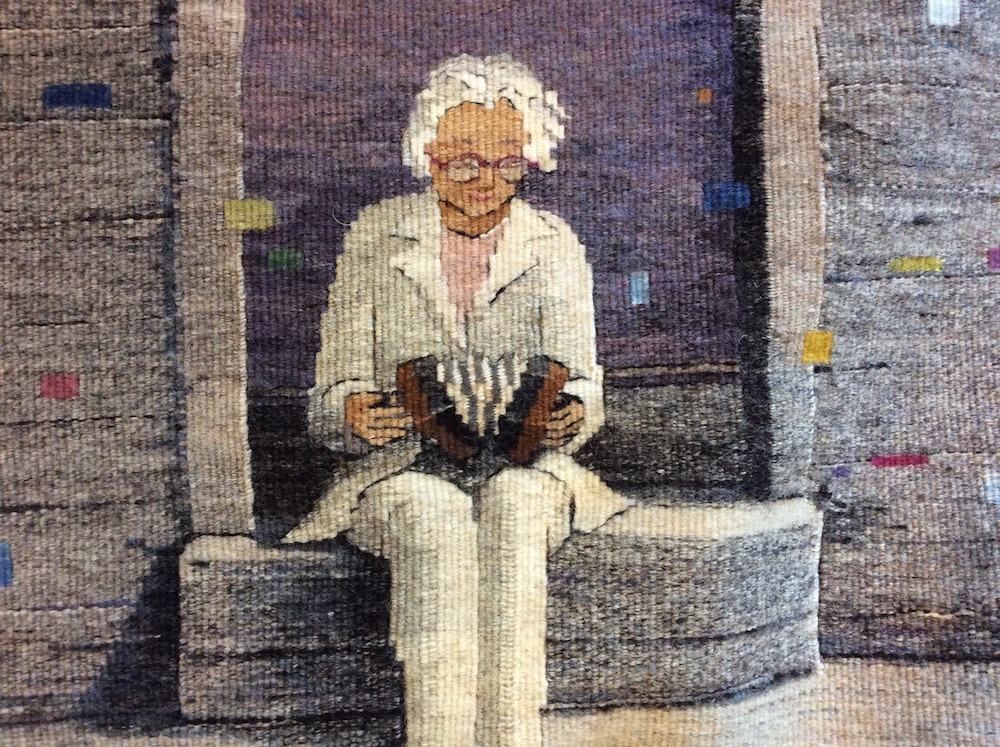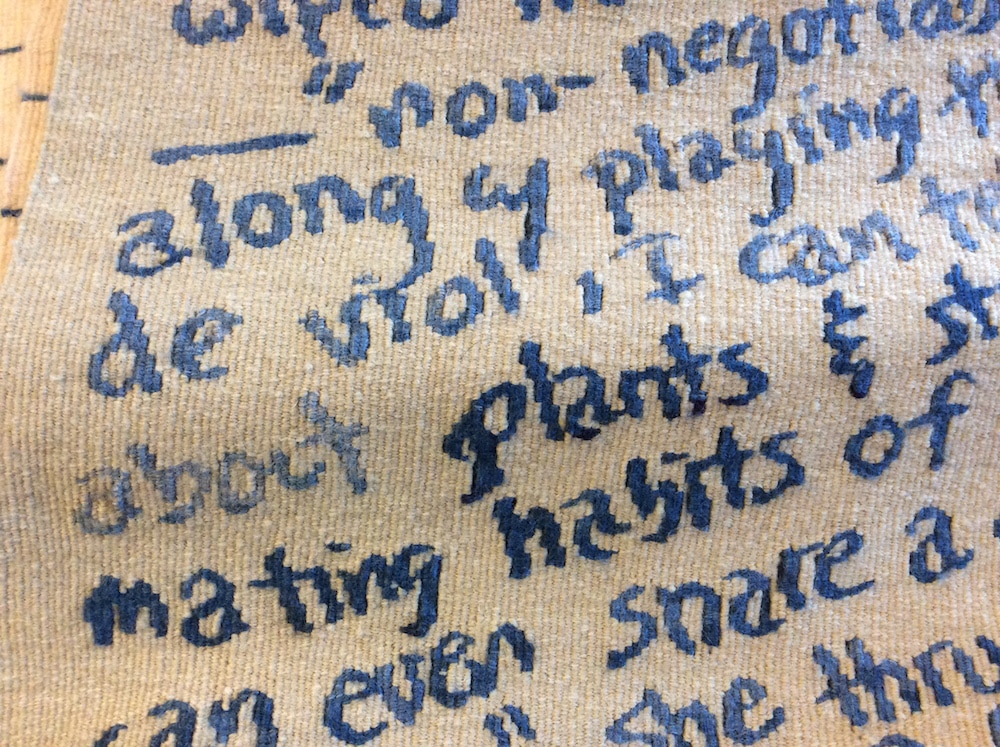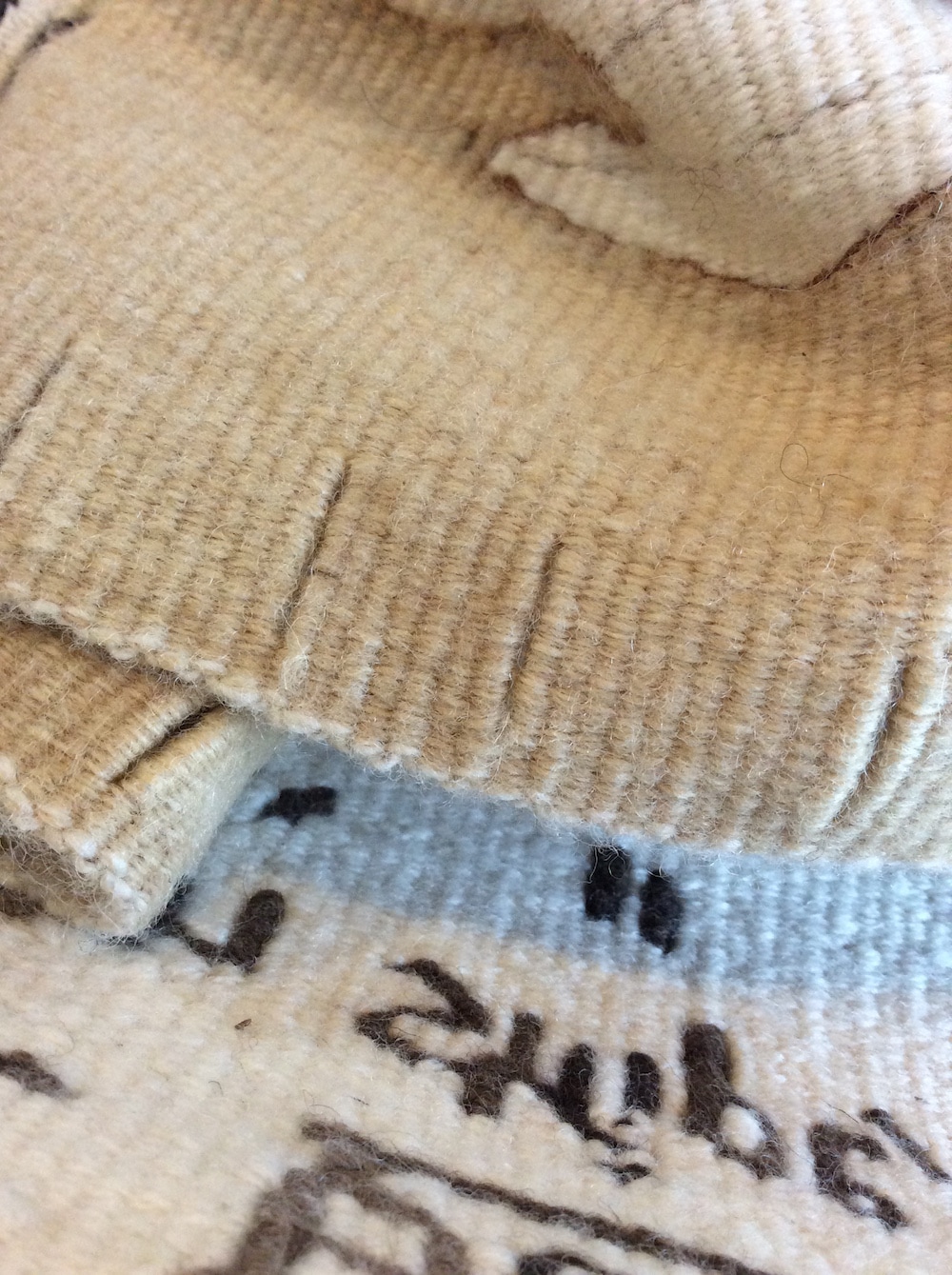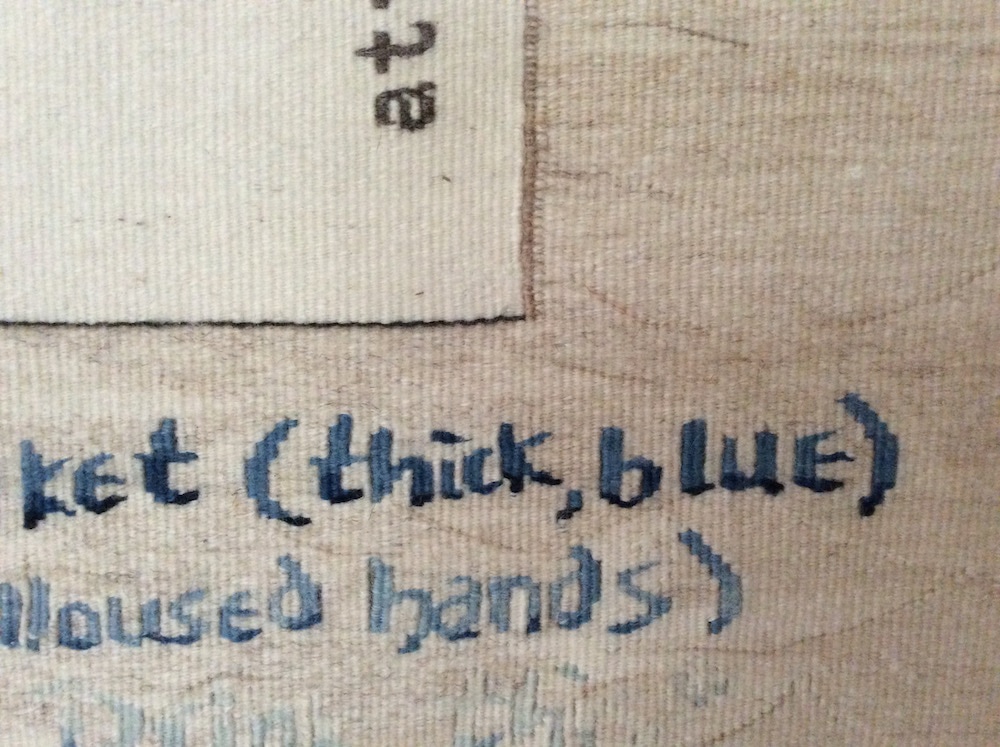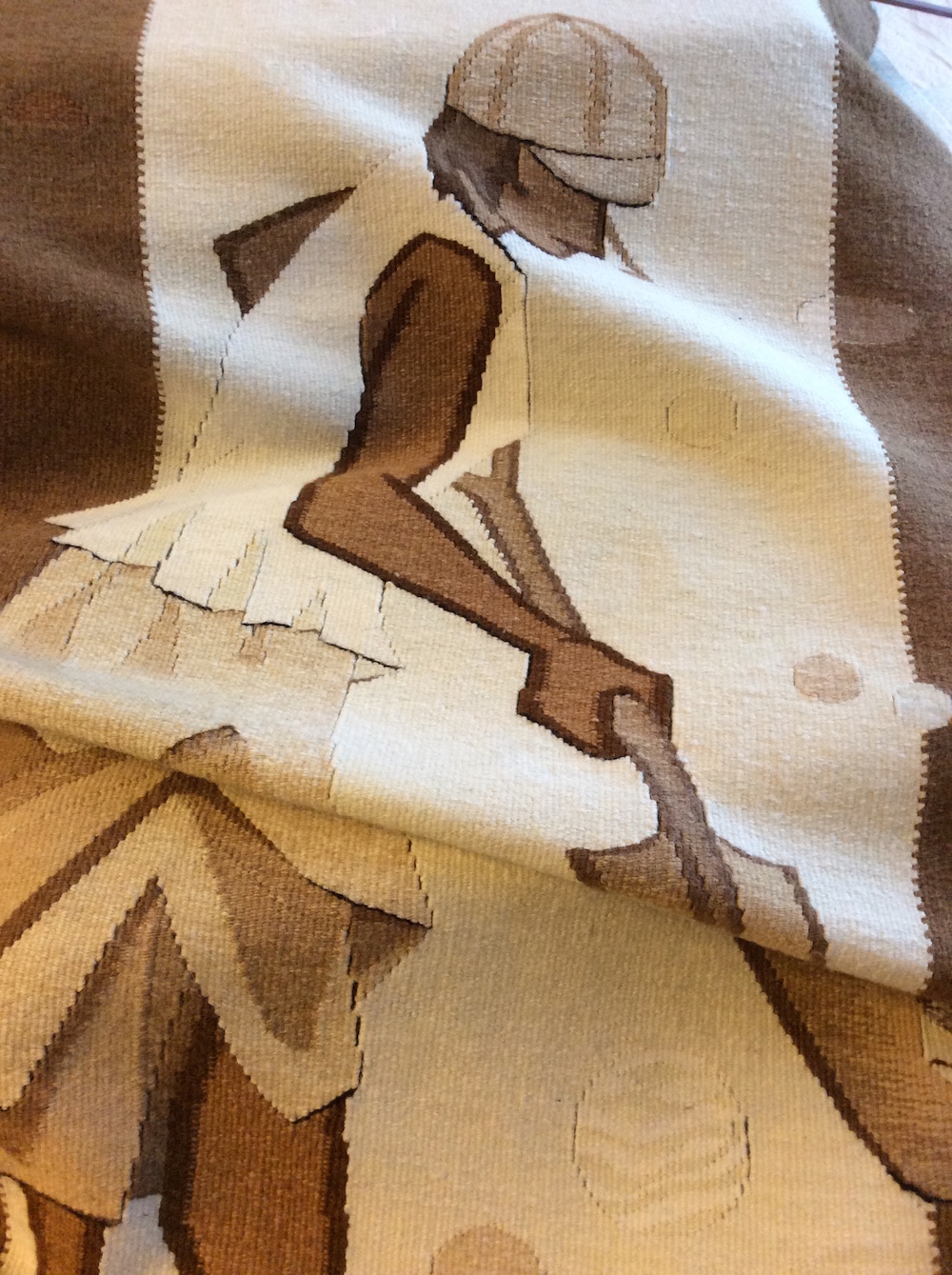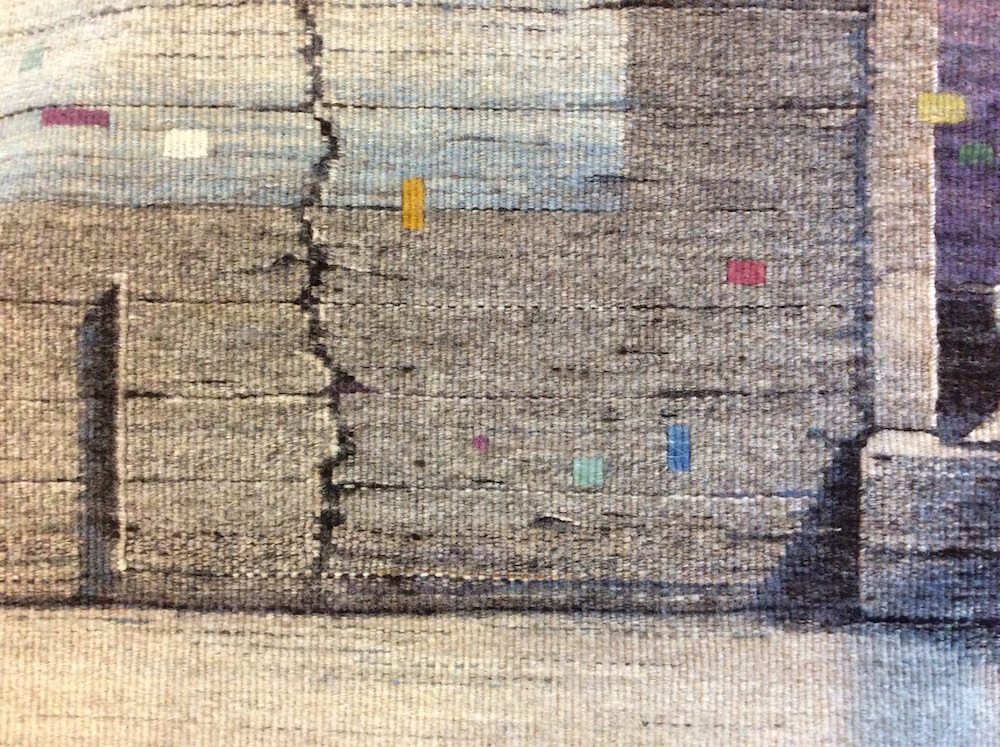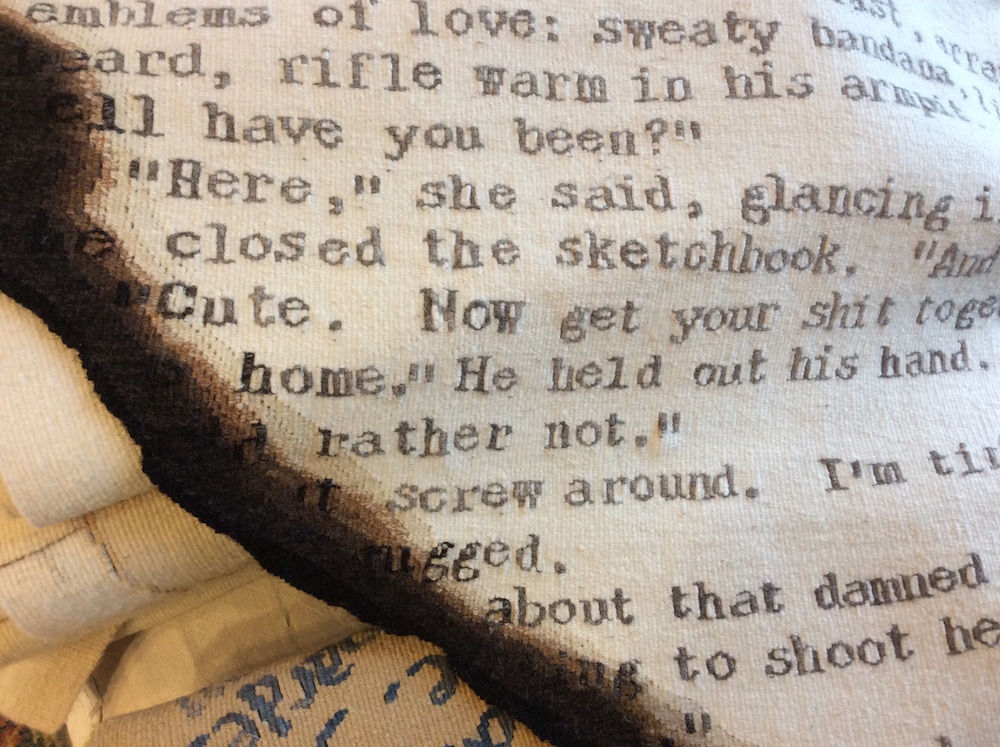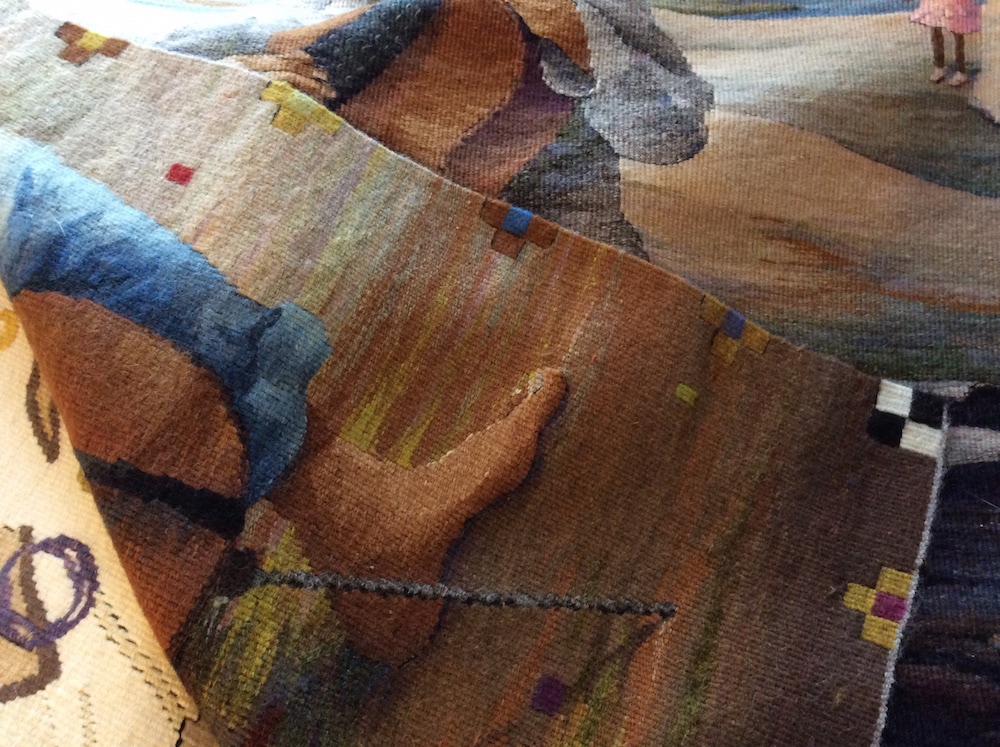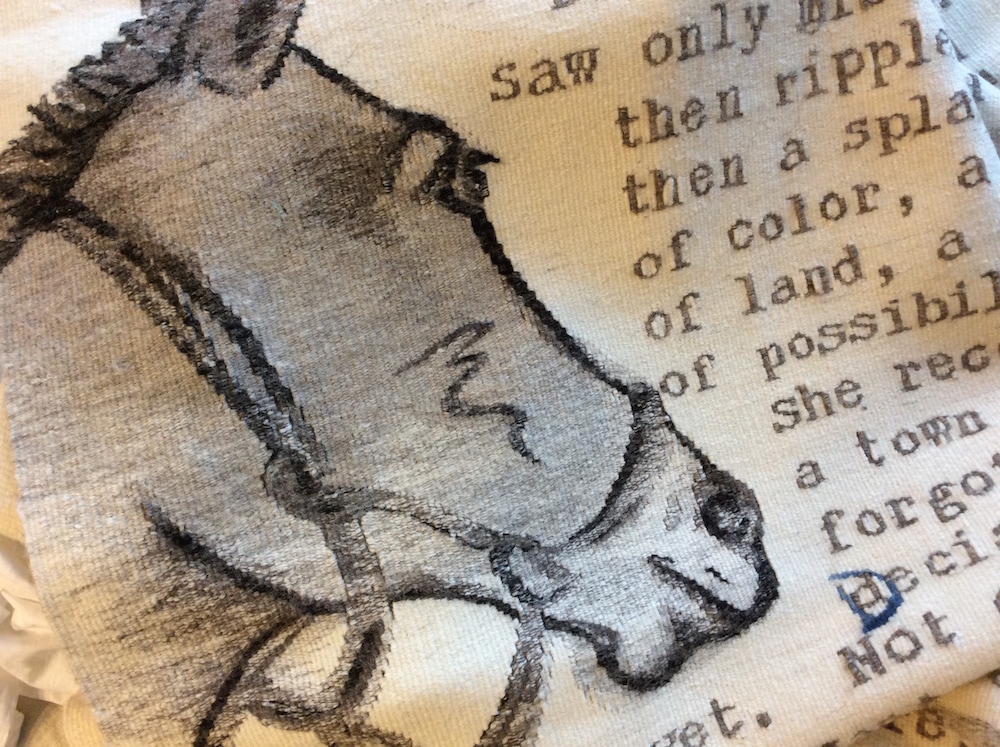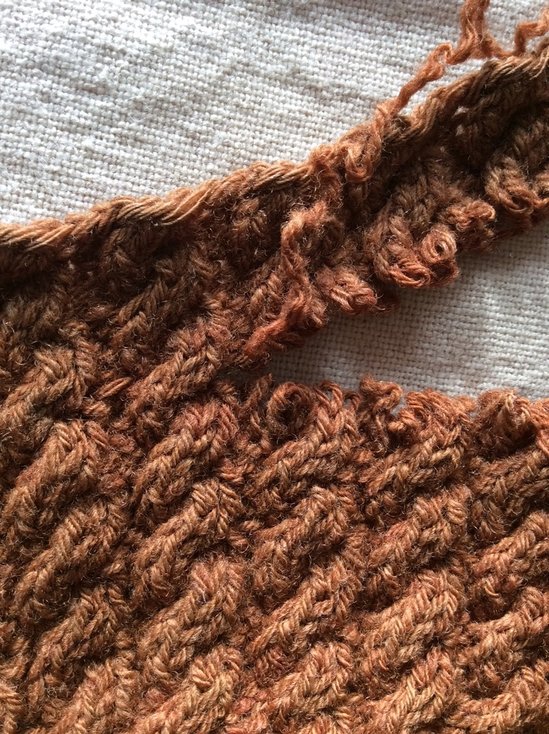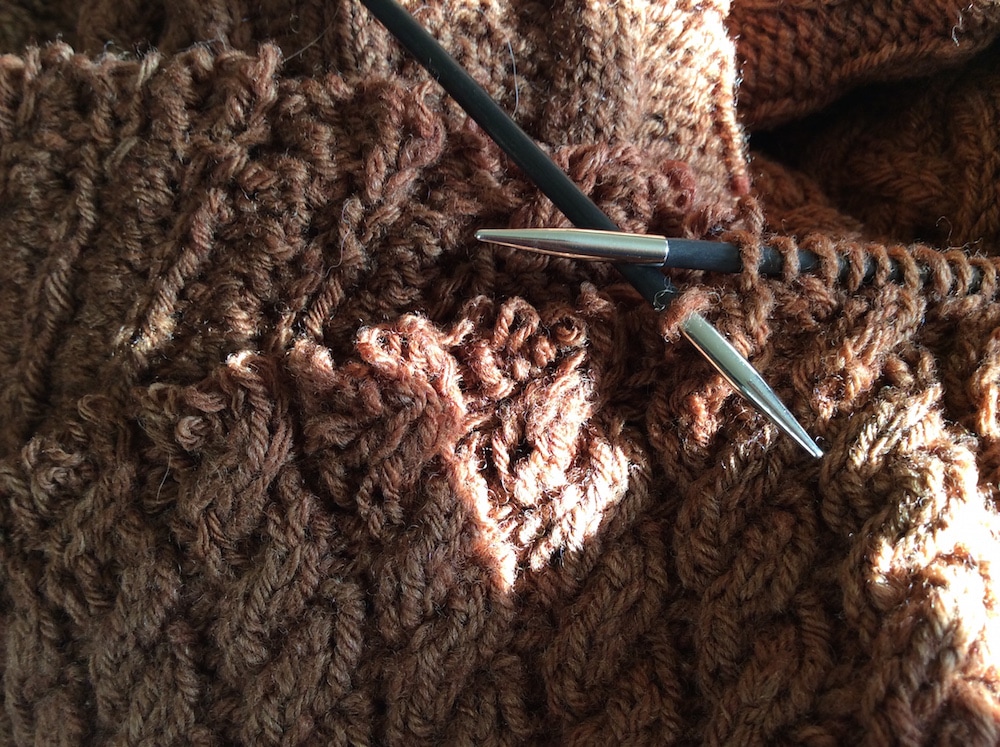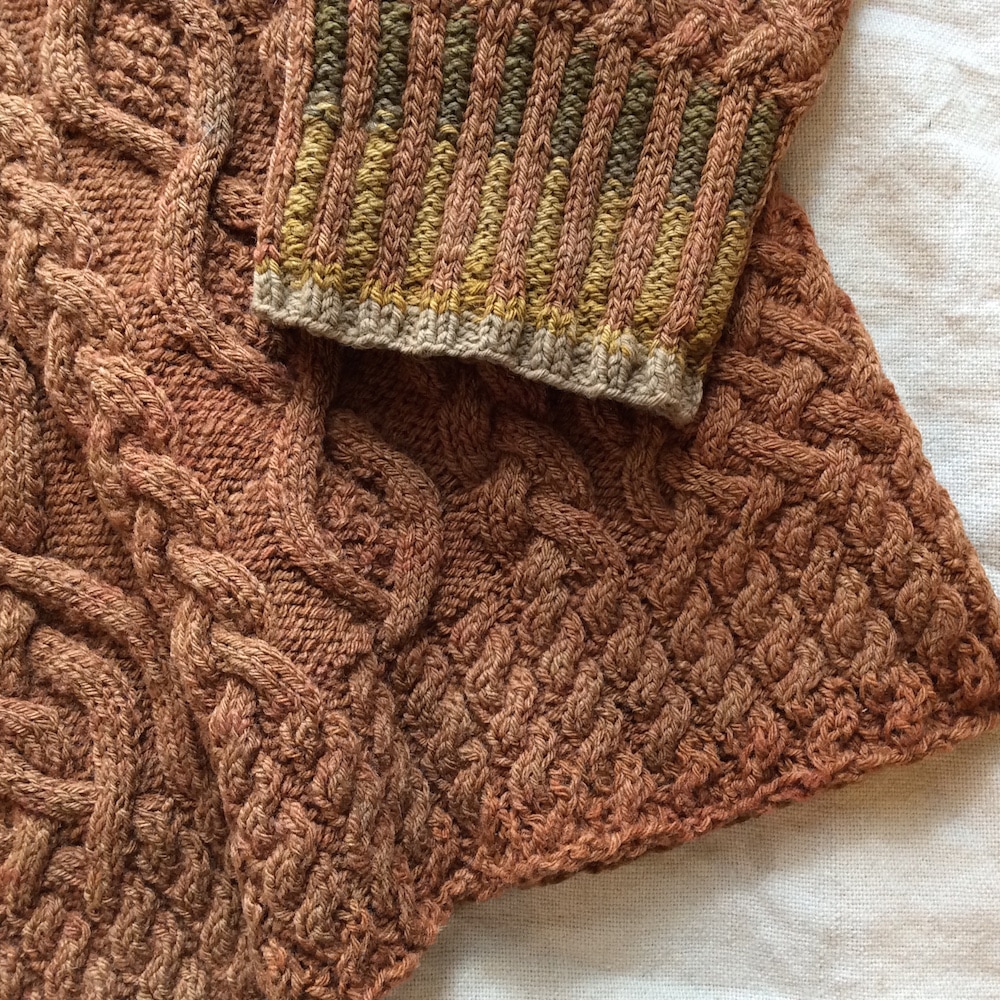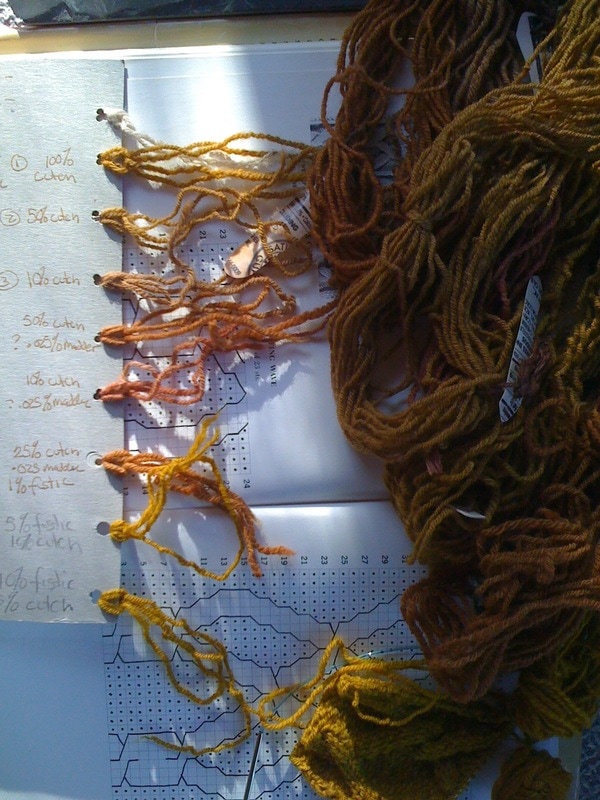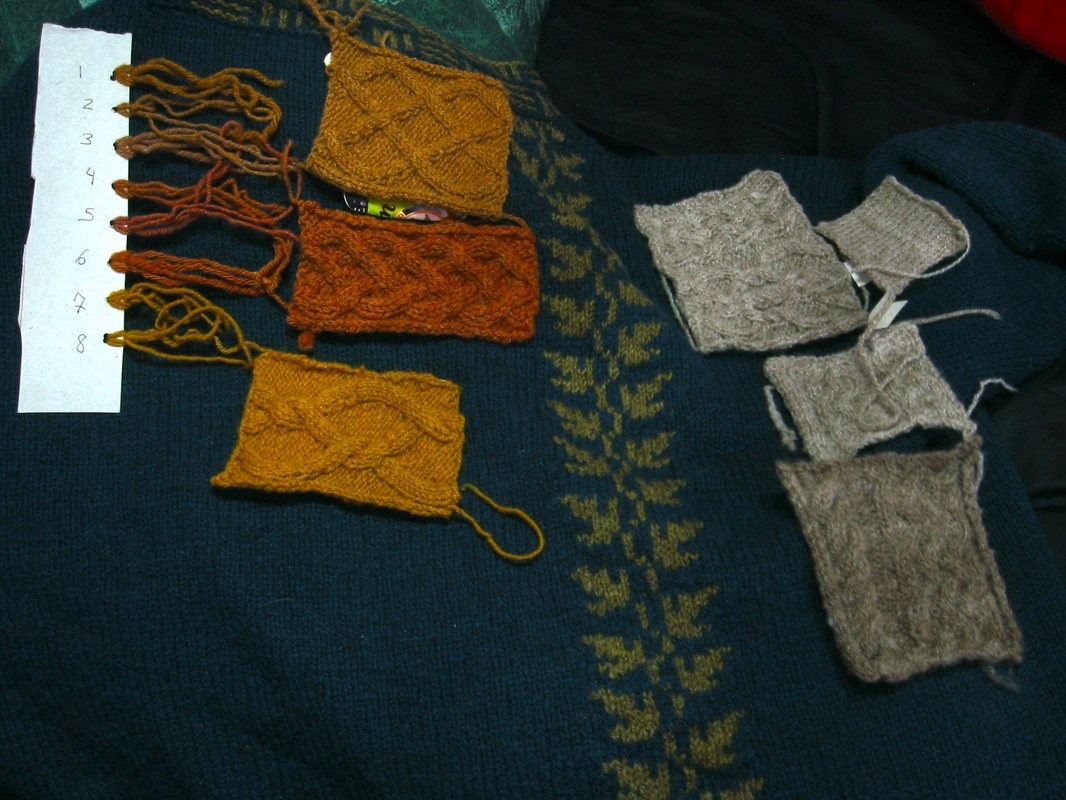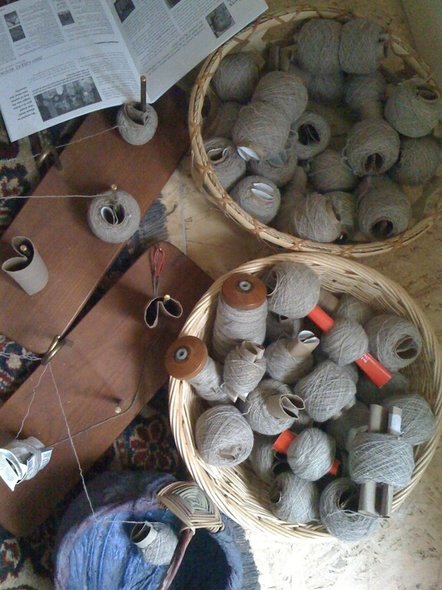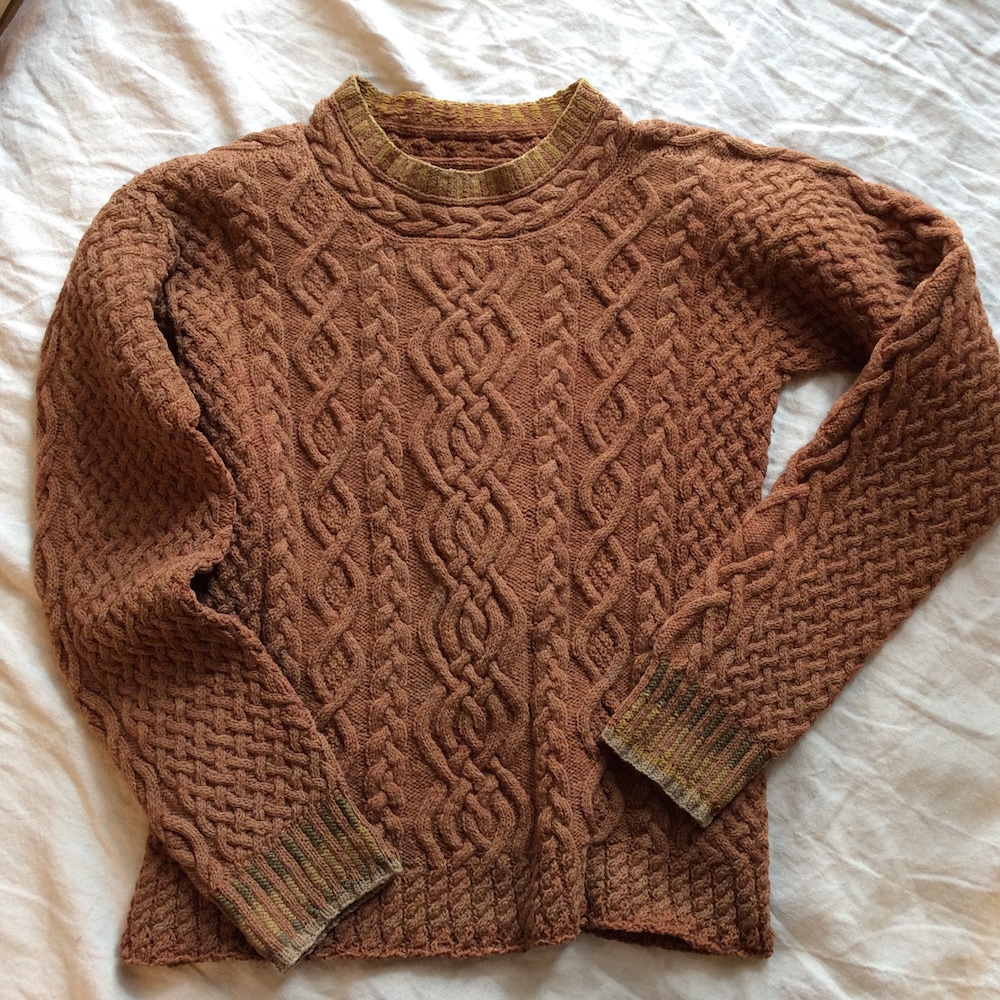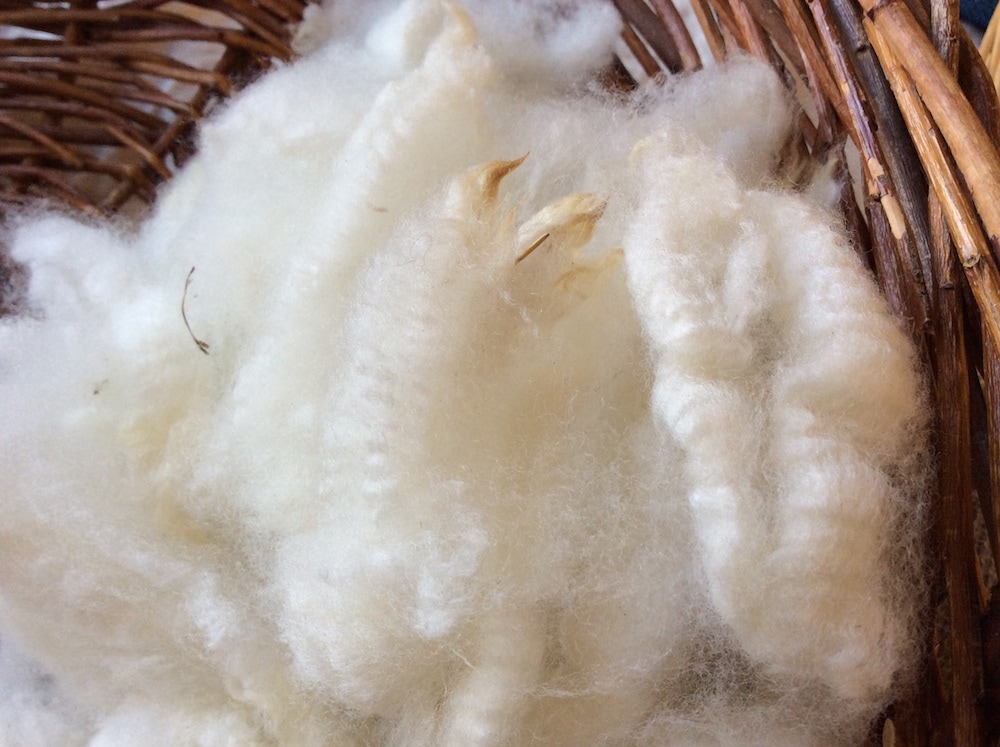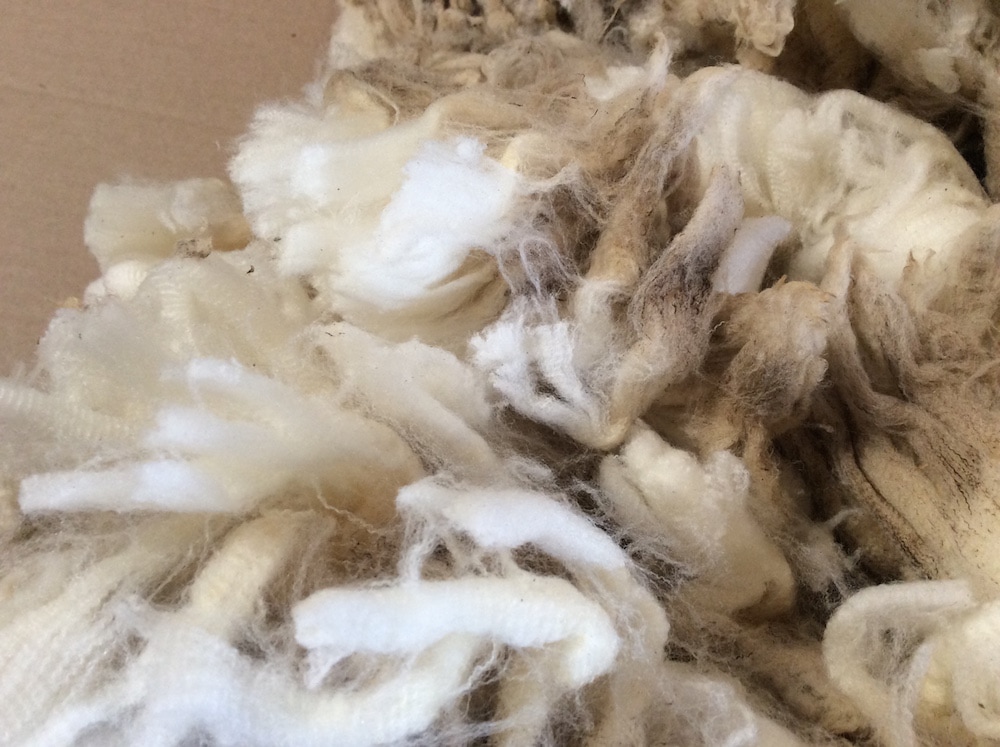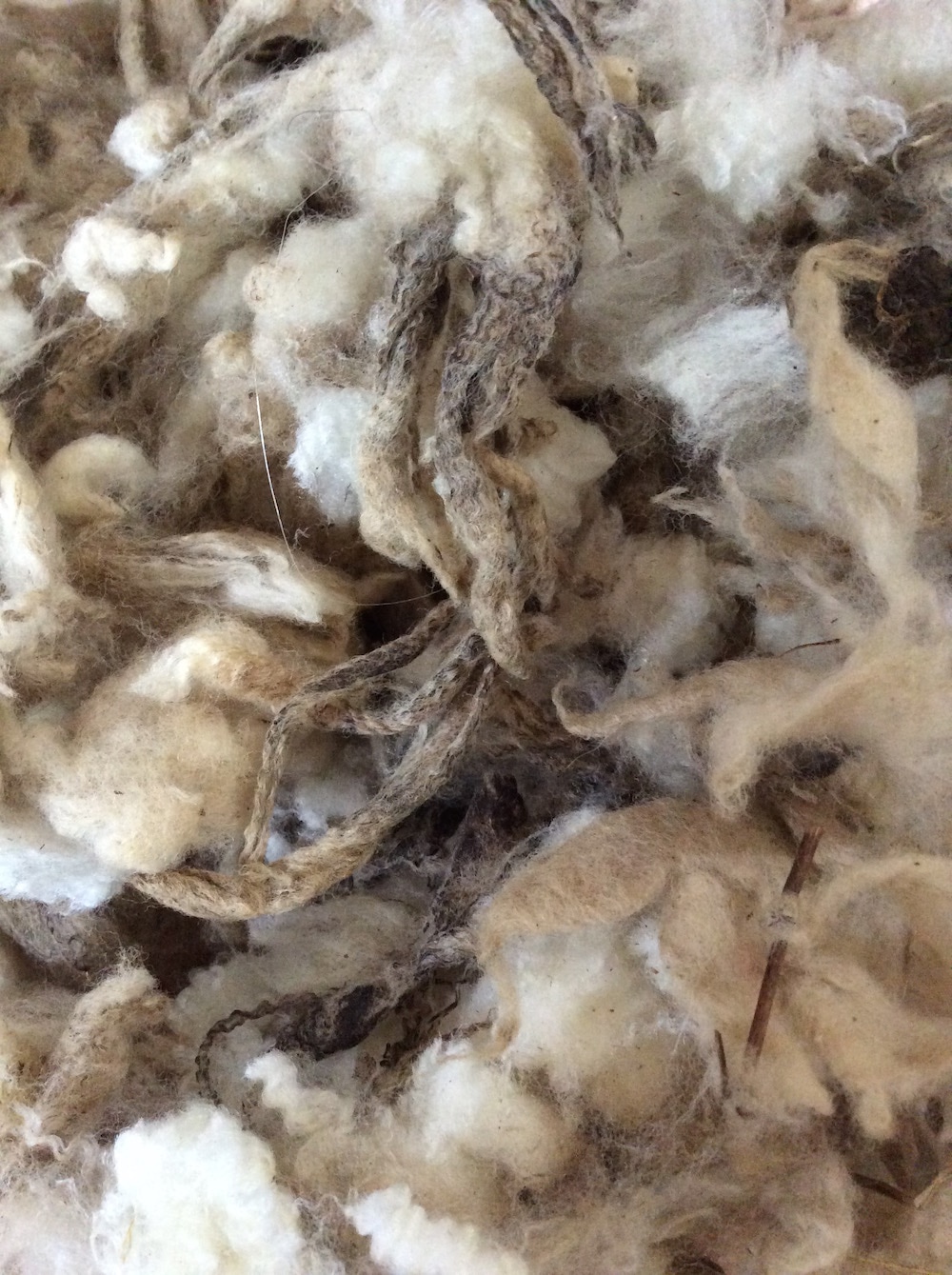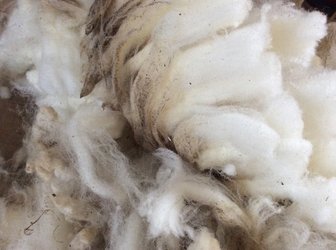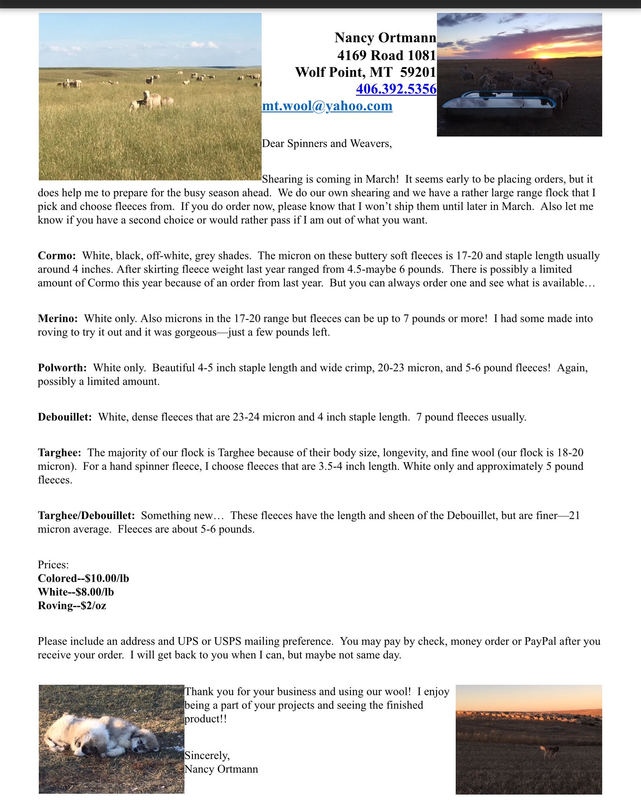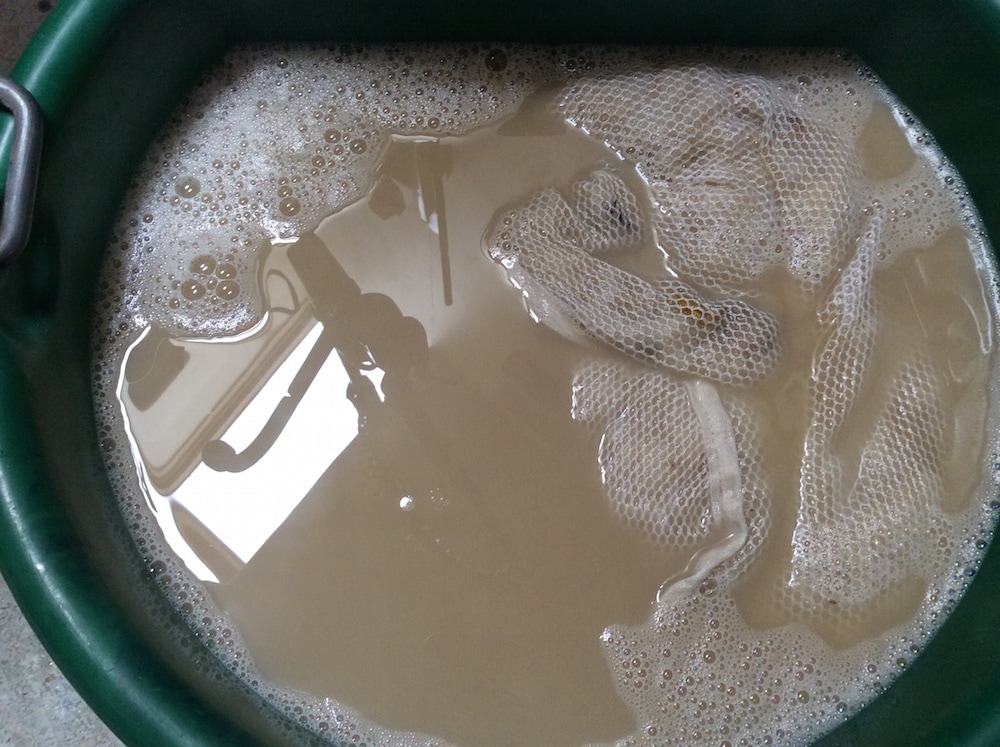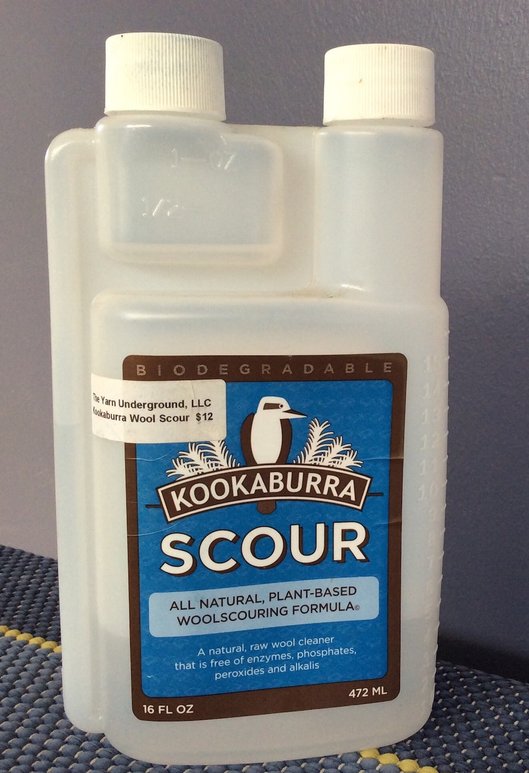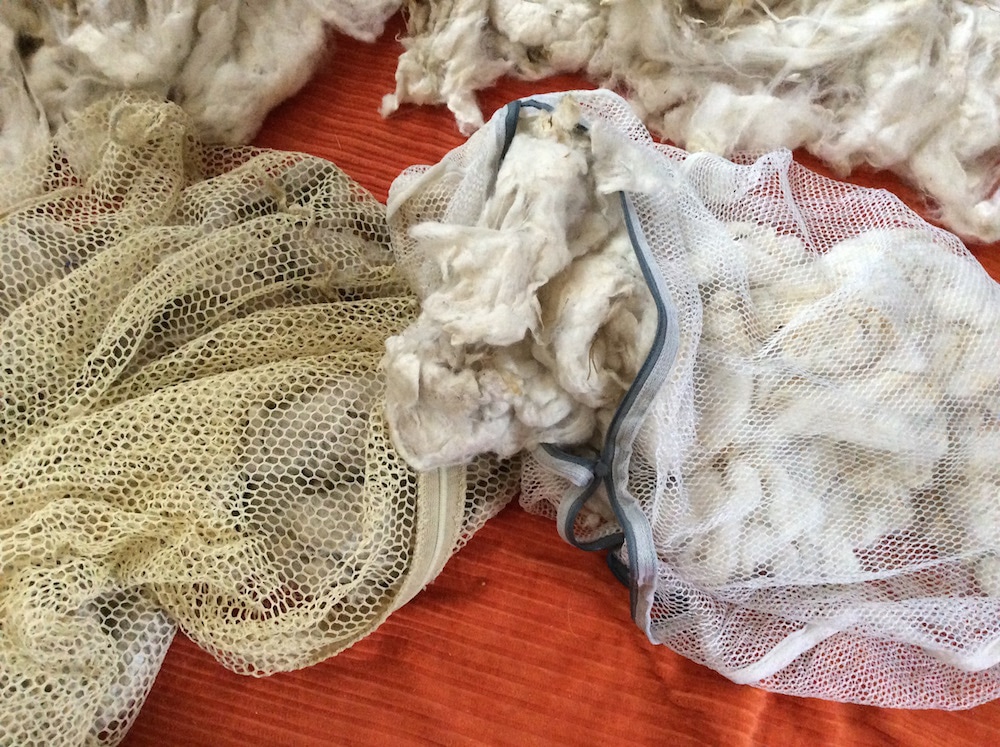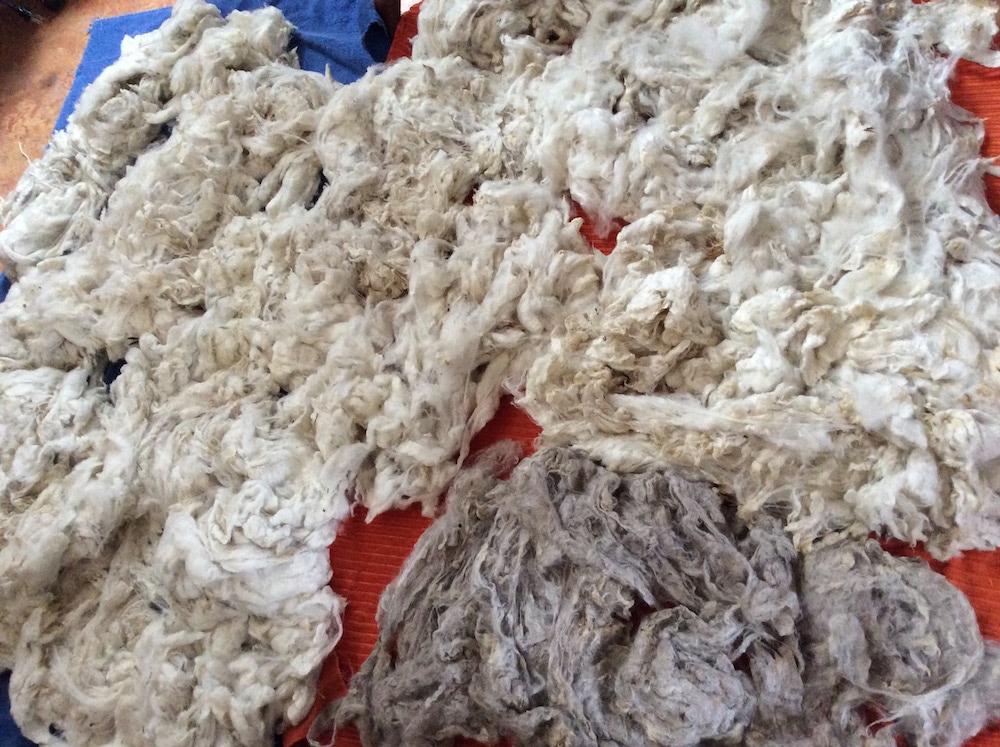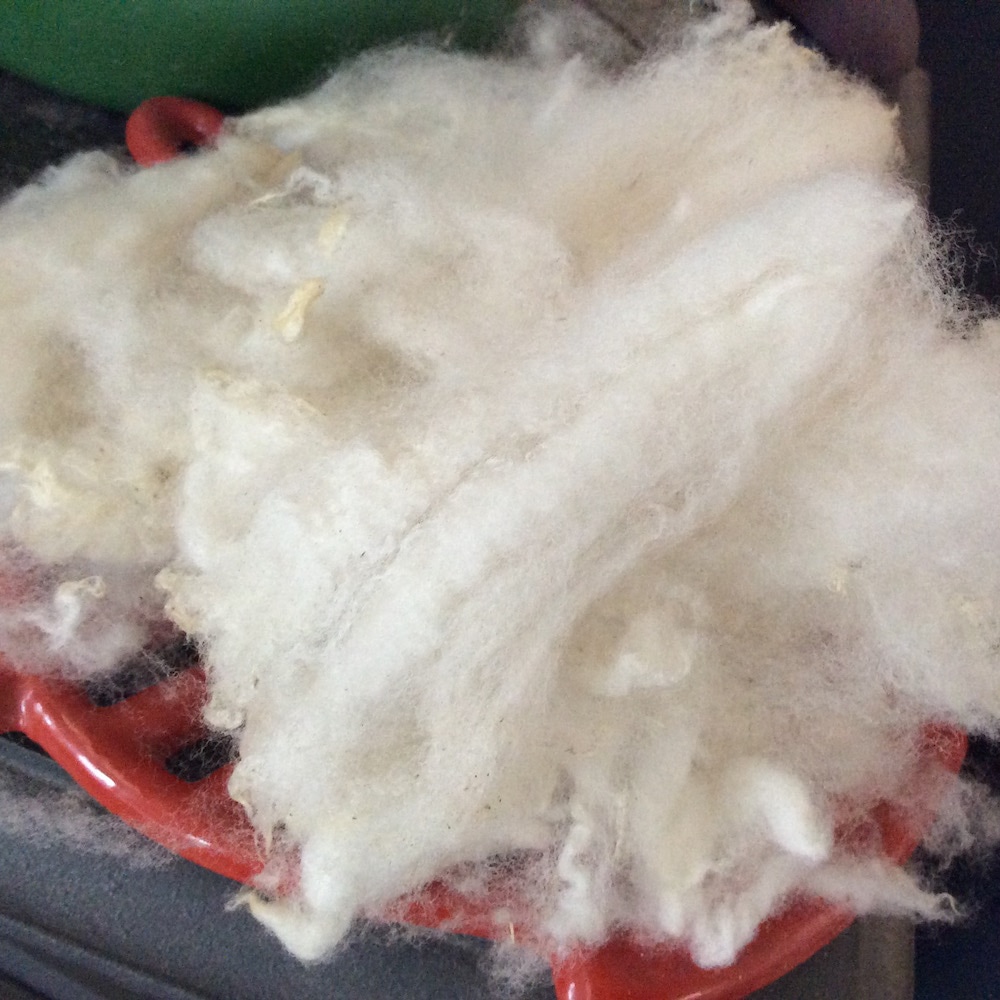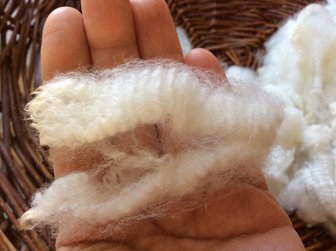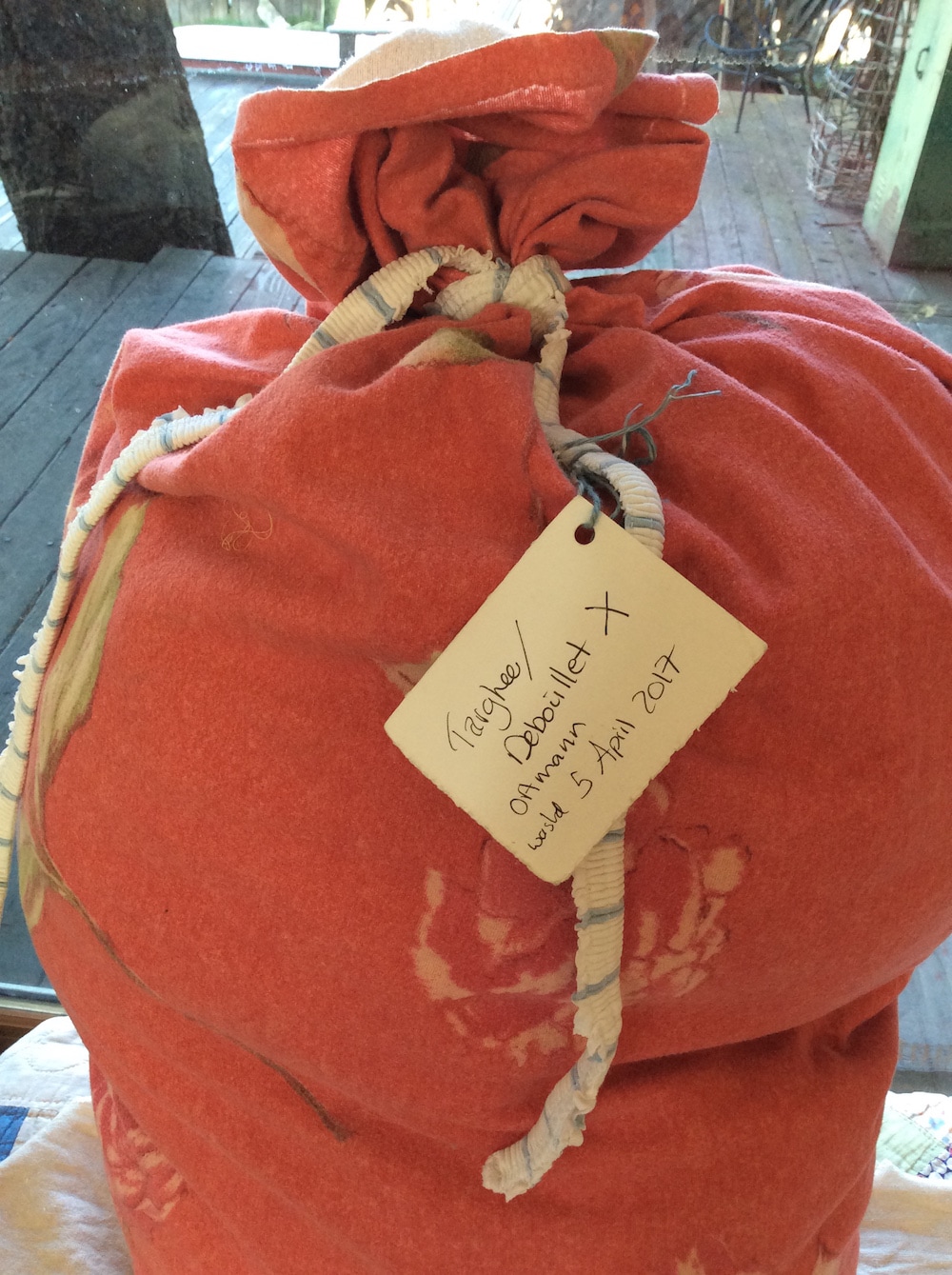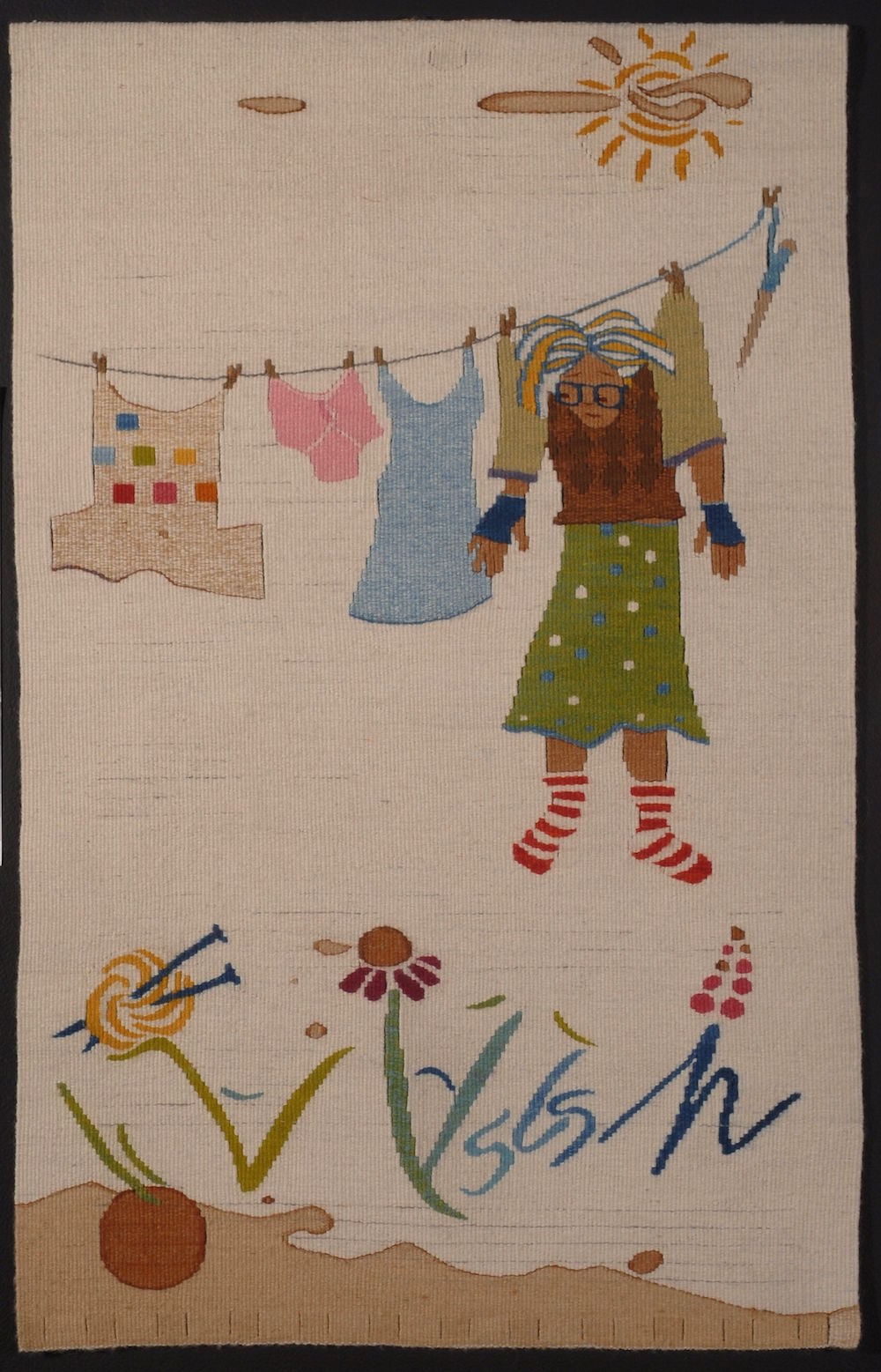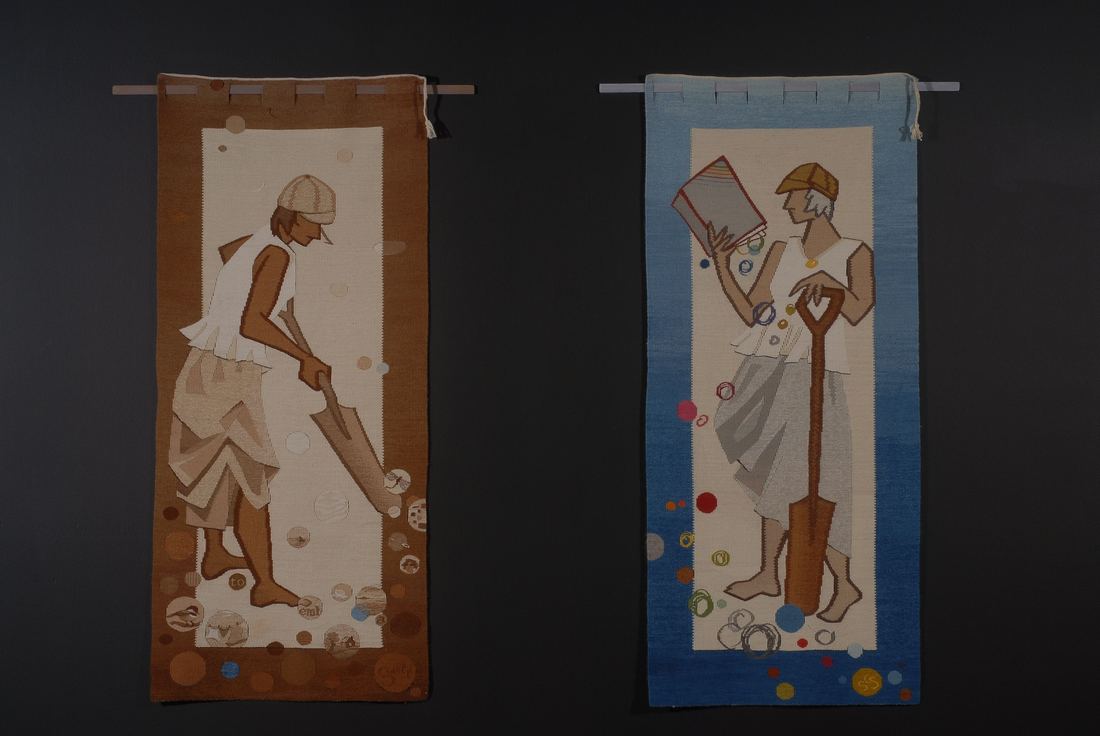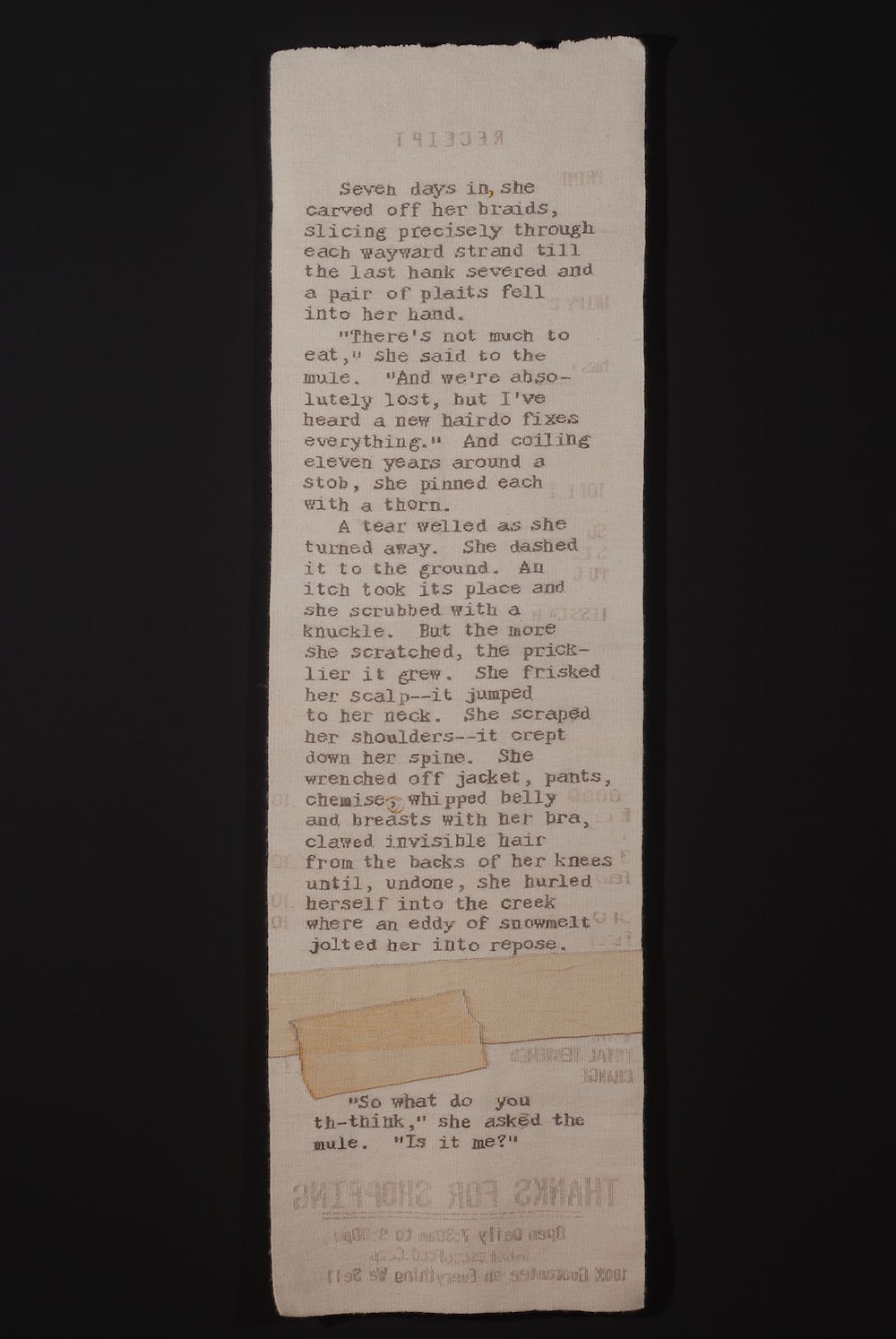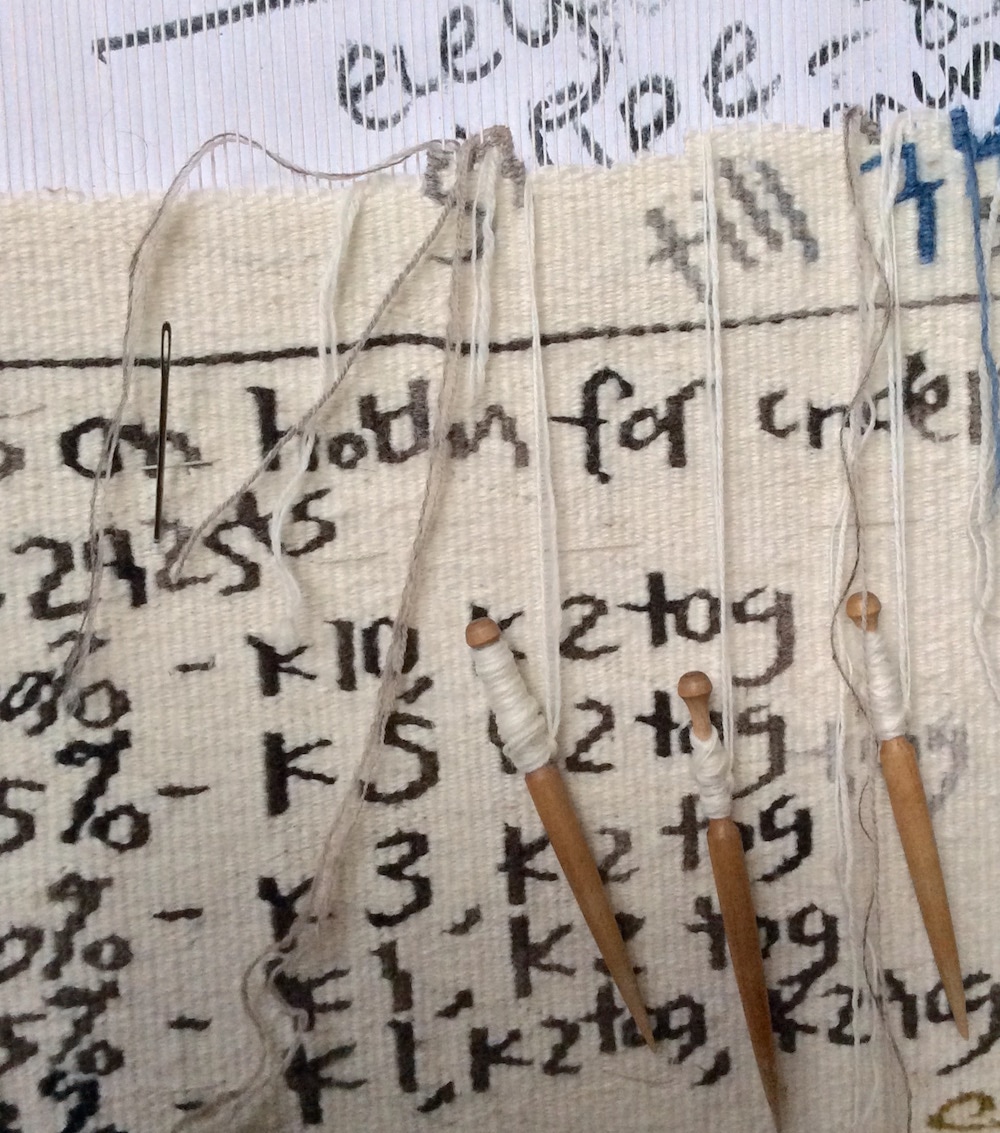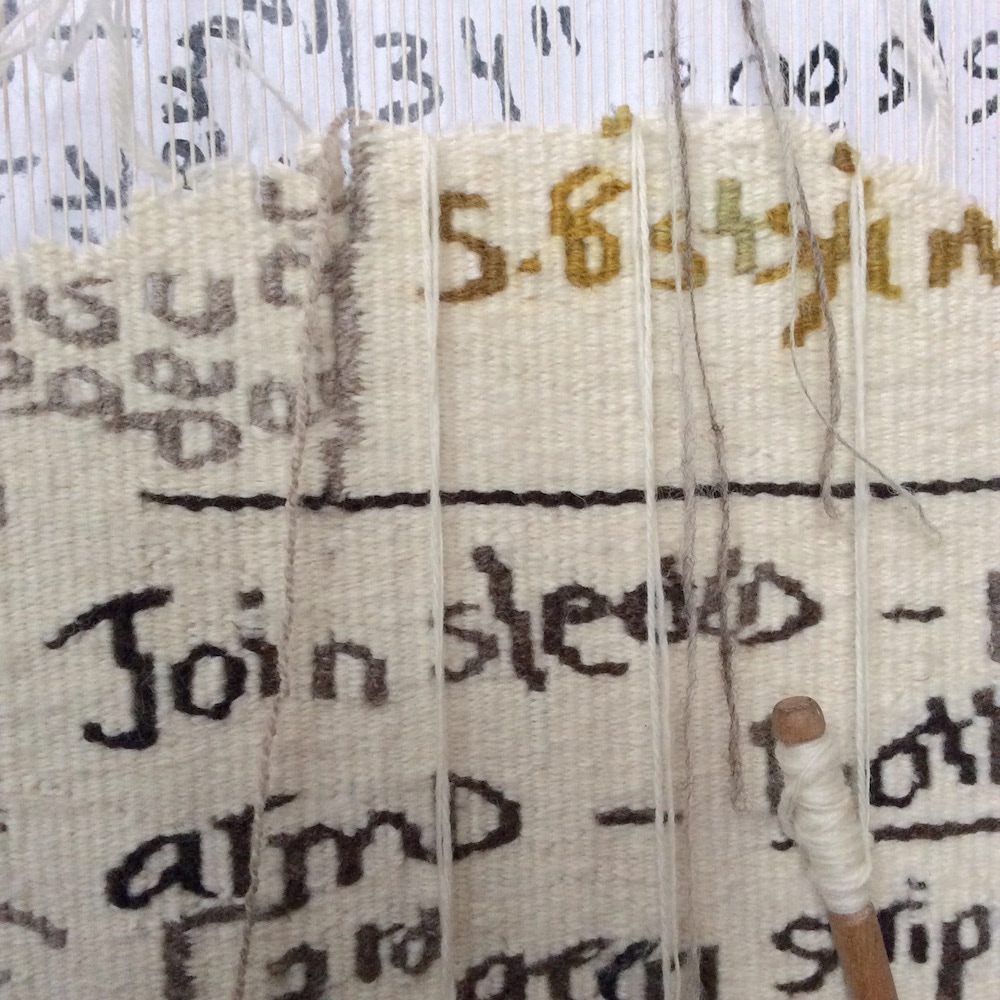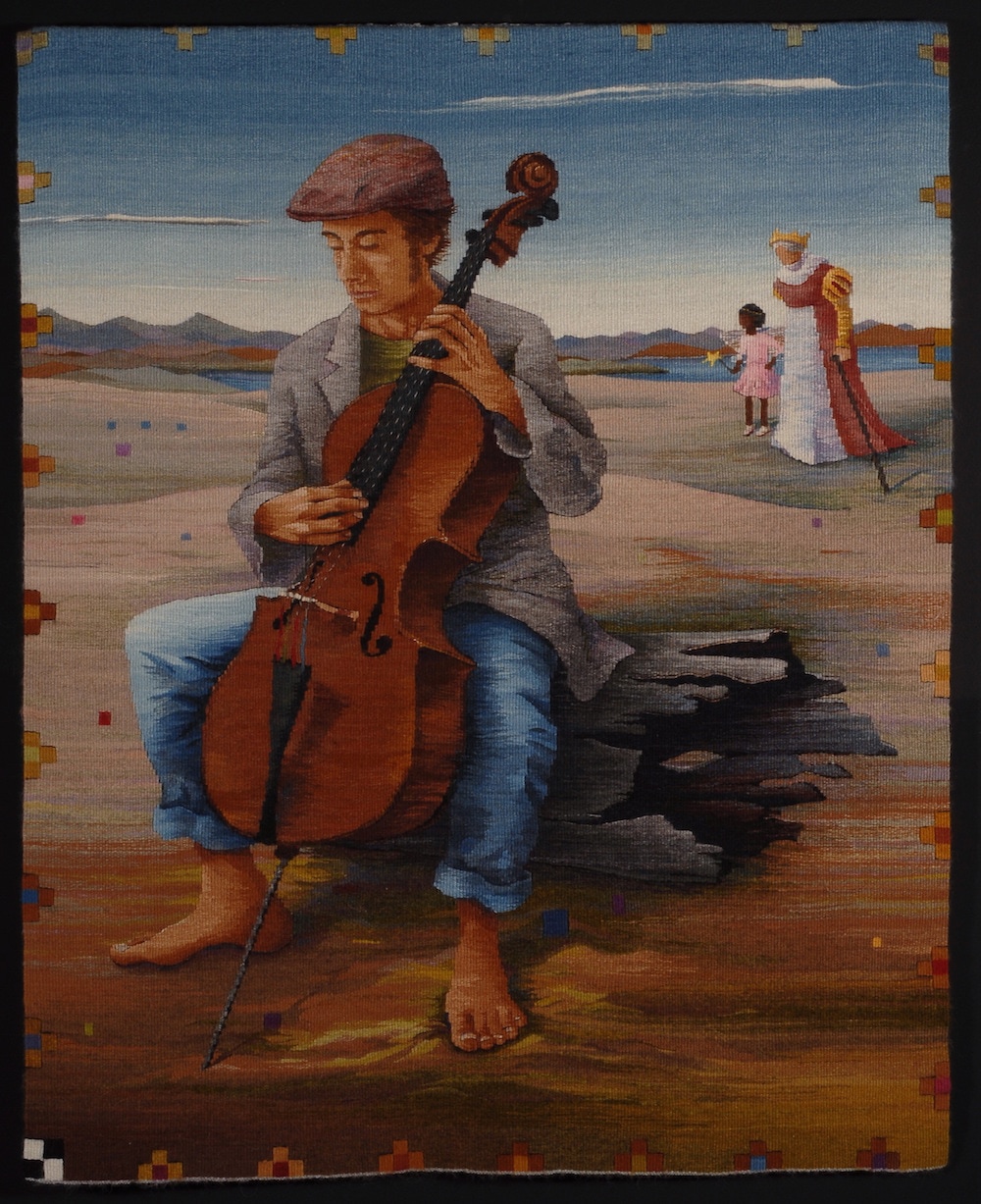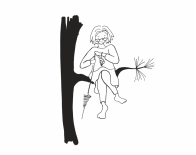together they represent years
of drawing
of gazing into the warp,
of tapping bits of weft into place,
about slits
about joins
about character.
a mood, an idea, a story,
so much I probably already have said--
about finishing edges
and the importance of drape,
avoiding the dreaded nipple effect when weaving circles,
to take funky photos of a few bits of my beloved work--
not neatly pressed,
professionally hung,
or beautifully lit as it will be next week,
out of focus, barely illuminated,
imperfect and at ease and perfectly lovely as the cloth that it is--
the cloth I want so much to let it be.
So that must be what I really had to say today!
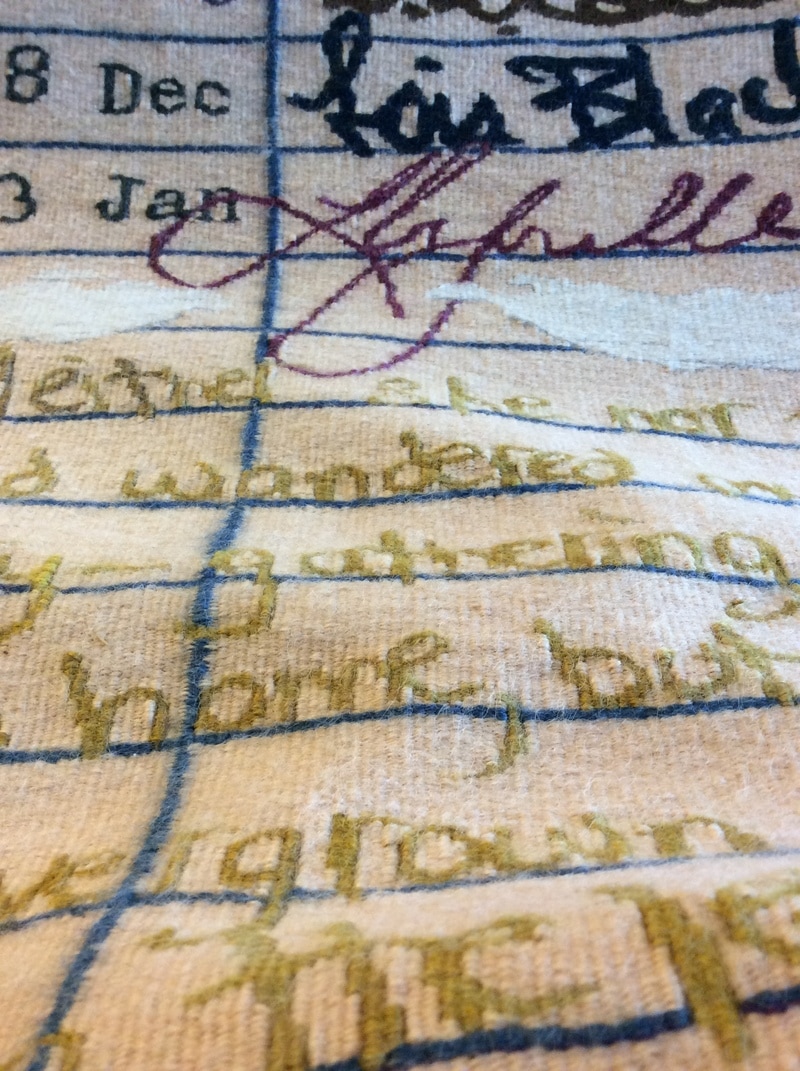 Rough Copy #3 (detail); hand woven tapestry; wool warp and weft; natural dye
Rough Copy #3 (detail); hand woven tapestry; wool warp and weft; natural dye 1. I probably won't write a blog post next Tuesday as I'll be in La Conner awaiting the opening of the show with these 23 tapestries at the Pacific Northwest Quilt and Fiber Art Museum (reception 3 May from 4-6 Pm), and I haven't figured out how to use the portable Weebly app. There is a good chance, however, I will post things to Instagram so if you want to see the tapestries out in the world and can't get to La Conner this summer, that's the place to go.
2. This show will be the last time that all thirteen of the Rough Copy tapestries will be exhibited together as they will be for sale individually for the first time at and after this show. One, indeed, has already sold. Making the decision to break up the series five years after finishing it is probably worth a blog post all of its own, but for the moment I'll just say that if you are interested in owning one you can contact the Museum starting next Wednesday, or, after the show comes down at the end of July, you can contact me!
sarah.swett1 (at) gmail.com
